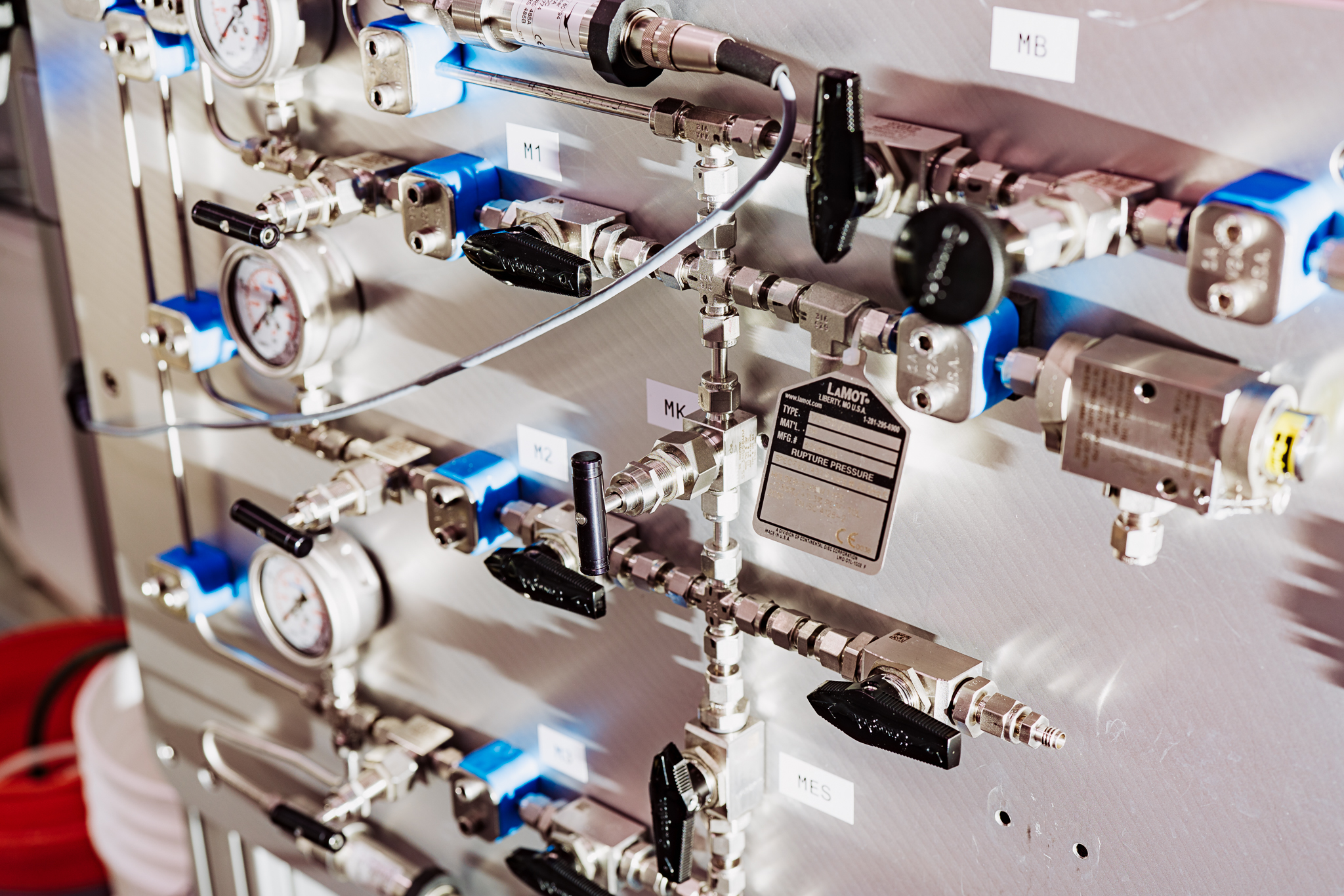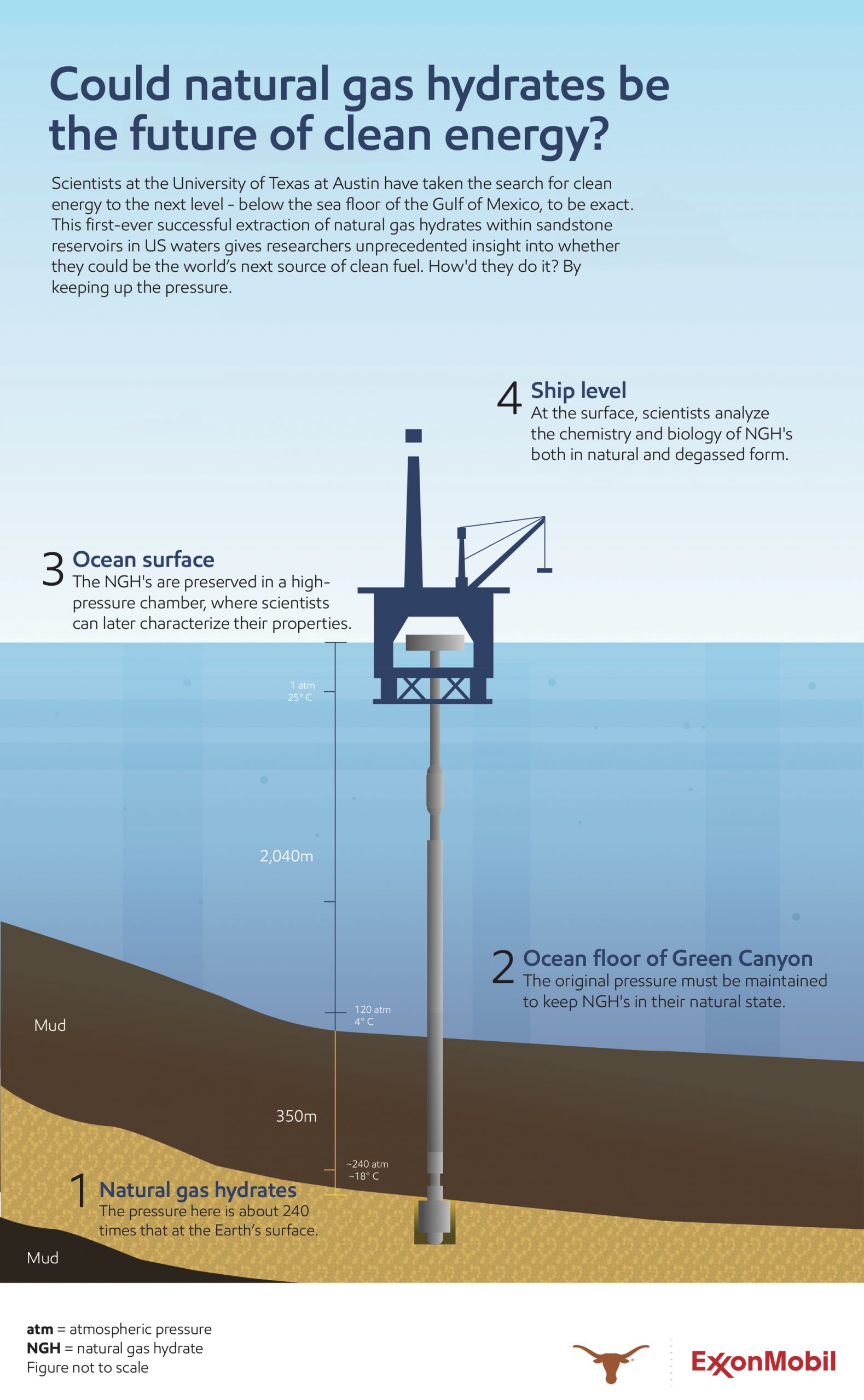The worldwide demand for energy is increasing, and with it, a no-holds-barred search for clean fuel sources.
Researchers at the University of Texas at Austin and ExxonMobil can attest. They’re going where few scientists have gone before to study a potentially large energy source found, among other places, in sandy sediments beneath the ocean floor in the Gulf of Mexico.
What treasure lies entombed in those ocean reservoirs? Natural gas hydrate, an ice-like solid containing natural gas and water. It’s stable at the high pressures and cold temperatures found there. This abundant, clean energy source has piqued the curiosity of scientists the world over for its potential to change the global energy mix on a grand scale.
The frosty natural gas is an exciting prospect; however, scientists know very little about it in its natural state. Bringing high-quality samples to the surface requires a level of effort and funding rarely achieved by research groups.
Oceanic natural gas hydrate reservoirs are found underground in very deep water. That high-pressure environment makes preservation of the samples challenging. Unless sophisticated measures are employed, samples break down before they reach the surface, effectively erasing the properties scientists need to study in the first place.
So, the U.S. Department of Energy funded an ambitious research initiative led by the University of Texas Institute for Geophysics with help from other government agencies and partner universities* to extract natural gas hydrate samples from the Gulf of Mexico and study them in their natural form.
The project, while daunting, was a success. The team was able to maintain the integrity of the samples as they traveled up from the sea floor, across sea and land and into the university laboratories.
“It’s the first time intact natural samples of hydrates have been recovered from sand-rich reservoirs in the Gulf of Mexico,” said Afu Lin, associate professor at UT. The DOE-funded samples represent a great research opportunity. Through its partnership with UT Austin’s Energy Institute, ExxonMobil is collaborating with geology and engineering faculty to learn more about natural gas hydrate reservoirs.
Specifically, they’re investigating how the reservoirs form and behave through reservoir models, advanced microbiology and geochemistry techniques, and through new efforts in observing geochemical and physical phenomena in the spaces between the sediment grains.
Bob Kaminsky, an emerging technologies advisor at ExxonMobil, said, “Just because there are a lot of hydrates doesn’t mean they’re usable.” Scientists still need to understand what happens to a hydrate reservoir when the natural gas hydrates are produced; that could be a determinant in their viability as a fuel source.
The only way to find out whether natural gas hydrates could serve as a clean energy source is to learn more about them – and that’s exactly what UT and ExxonMobil scientists are doing.

*Bureau of Ocean Energy Management (BOEM); U.S. Geological Survey (USGS); Ohio State University; Columbia University; University of New Hampshire; Oregon State University; University of Washington





